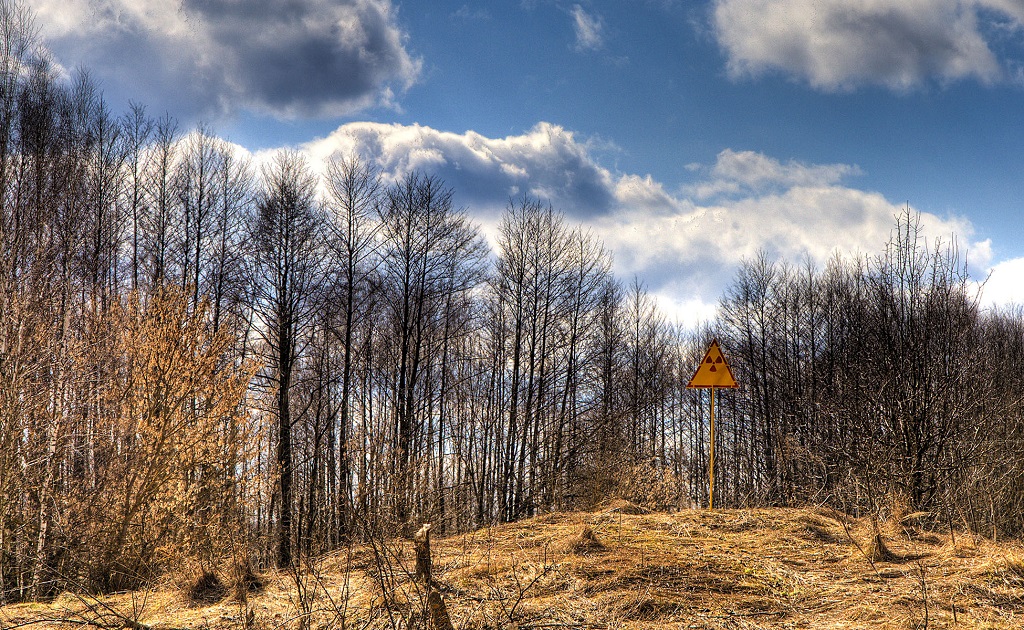By Doyle Irvin, American Forests

Over the course of the 30 years since the Chernobyl disaster, many things have changed in the Exclusion Zone — and many things have stayed the same. So, let’s explore the impact of the nuclear accident on nature.
In tragic irony, the cause of the Chernobyl explosion was an experiment meant to test the safety of the nuclear reactor. Things went badly wrong, the Chernobyl 4 reactor exploded, and the nearly 116,000 local residents were evacuated over the following months. Since then, scientists have been exploring the consequences for wildlife in the area — of both radiation and the absence of humans.
What isn’t occurring is what dime-store novels would have you expect, such as extra limbs or extranormal abilities. There were isolated incidents of serious mutation directly after the incident, but for the most part the biological changes are limited, or as yet undiscovered. There are examples of birds with smaller brains, and a conspicuous absence of spiders. But, when it comes to big game, such as deer, boar, moose, elk and bears, nature has seen the human-evacuation as an opportunity.
“It’s just incredible,” says Jim Beasley, a scientist studying in Chernobyl told National Geographic. “You can’t go anywhere without seeing wolves.”
The recovery of the wolves, in particular, is remarkable: the studies are showing that they are seven times more numerous than in other nature reserves, including Yellowstone. The populations of the other big animals have also been on a steady rise over the last 30 years.
Scientists are still worried, however.
“This doesn’t mean radiation is good for wildlife, just that the effects of human habitation — including hunting, farming and forestry — are a lot worse,” says Professor Jim Smith, another scientist studying Chernobyl.
Some scientists worry that there haven’t been enough generations of breeding yet to truly tell the impact of the radiation on big animals.
Unfortunately, it seems that it is mainly just the mammals who are benefitting. There is already worrying news about smaller organisms and plant life. A recent study focused on the decomposers of the ecosystem — everything from mushrooms to microbes. They took leaf litter and placed it in various kinds of bags in more than 500 locations throughout the Exclusion Zone, returning a year later to measure how much had decomposed. In places with no radiation, 70-90 percent of the leaf litter had been processed as normal. But, in areas contaminated by the explosion, the process of decomposition seemed to have halted.
To highlight this, one only needs to look at the forest directly surrounding the reactors. All of the trees are dead, after the explosion slowly turning from evergreen to a rust color, earning the woods the name “Red Forest” and clearly exhibiting the lethal effect of radiation. Yet, the trees still stand, 30 years later, essentially untouched by the micro-organisms that render dead vegetation into dirt.
There are a number of consequences involved here, both short- and long-term. The immediate worry is that the build-up of leaf litter and dead wood increases the chance of catastrophic wildfires, and the smoke from these fires would spread radiation into populated areas beyond the Exclusion Zone. The longer term worry is that without decomposers, the nutrients of the Chernobyl ecosystem are no longer being recycled — meaning that this robust recovery of wildlife is founded on borrowed time, like an investment bubble waiting to pop.
http://news.nationalgeographic.com/2016/04/060418-chernobyl-wildlife-thirty-year-anniversary-science/
http://www.livescience.com/52458-wildlife-populations-chernobyl-disaster.html
http://link.springer.com/article/10.1007%2Fs00442-014-2908-8